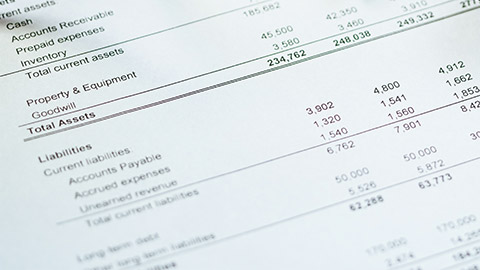Profitability analysis is a critical process in hospitality management that involves assessing the financial performance of a business to determine its ability to generate profit. This analysis helps managers understand the revenue and cost structures of their operations, identify profitable services or departments, and uncover areas where expenses can be reduced. In the hospitality industry, profitability analysis often includes evaluating room occupancy rates, food and beverage sales, labour costs, and guest service expenditures. By regularly conducting this analysis, hospitality managers can make informed decisions that enhance operational efficiency, improve pricing strategies, and ultimately maximise the bottom line. A thorough understanding of profitability is essential for maintaining a sustainable business model, allowing managers to allocate resources effectively and respond to changing market conditions.

Gross Profit Margin is one of the key financial metrics which indicate how efficiently a business is managing its operational and production costs, relative to its revenue. The calculation of Gross Profit Margin is expressed as a percentage and is made by subtracting Cost of Goods Sold (COGS) from total revenue and dividing that by total revenue. The formula looks like this:
In the context of hospitality, COGS typically includes expenses directly tied to the provision of services, such as food and beverage costs, room supplies, and housekeeping materials. A higher gross profit margin indicates that a hospitality business retains more money from each dollar of revenue, which can be reinvested into the business for improvements or used to increase profitability.
Understanding gross profit margin is vital for hospitality managers, as it provides insights into pricing strategies and cost control measures. For example, if a resort finds its gross profit margin declining, it may need to evaluate its pricing structures or identify areas where operational efficiencies can be improved. Additionally, tracking gross profit margin over time can help managers assess the effectiveness of marketing initiatives and promotional efforts, enabling them to make informed decisions that enhance overall profitability. By optimising gross profit margin, hospitality businesses can ensure sustainable growth and long-term success in a competitive market.
Operating profit margin is a crucial financial metric that reflects a hospitality business's operational efficiency and profitability after accounting for all operating expenses, excluding taxes and interest. This margin indicates how much profit a company generates from its core business operations, providing a clearer picture of its financial health than gross profit margin alone. The formula for calculating operating profit margin is:
Operating income is derived from total revenue minus all operating expenses, including wages, rent, utilities, and marketing costs. This margin offers insights into how effectively management controls costs related to daily operations. A higher operating profit margin signifies that a larger portion of revenue is retained as profit after covering operating expenses, enabling the business to invest in improvements, expand services, or enhance guest experiences.
Monitoring operating profit margin over time allows hospitality managers to identify trends and assess the impact of strategic initiatives, such as cost-cutting measures, pricing adjustments, or operational improvements. For instance, if operating profit margin decreases, it may indicate rising operational costs or declining revenue, prompting management to review expense management practices or evaluate the effectiveness of promotional campaigns. By focusing on enhancing operating profit margin, hospitality businesses can achieve greater financial stability, ultimately supporting long-term growth and success in a competitive landscape.
Net profit margin is a comprehensive measure of a hospitality business's overall profitability, reflecting the percentage of total revenue that remains as profit after all expenses, including operating costs, taxes, interest, and other non-operating costs, have been deducted. The formula for calculating net profit margin is:
In the context of hospitality management, net profit margin provides a complete picture of financial health by showing how effectively a business converts its revenue into actual profit. Unlike gross or operating profit margin, net profit margin accounts for all financial obligations, making it a key indicator of long-term sustainability.
For example, a New Zealand resort like Pauanui Ocean Resort might generate high revenues during peak holiday periods, but if operating costs, interest payments on loans, or tax liabilities are high, the net profit margin could still be relatively low. A low net profit margin might signal the need for better cost management or adjustments to pricing strategies.
Maintaining a healthy net profit margin is crucial for hospitality businesses, particularly in regions where operating costs fluctuate seasonally, such as in coastal or alpine areas that experience peak and off-peak tourist cycles. By closely monitoring their net profit margin, managers can make informed decisions about cost controls, investments, and growth strategies, ensuring that the business remains profitable throughout the year. This metric also provides valuable insights into whether current pricing models and promotional activities are supporting the overall financial goals of the business.

Return on Assets (ROA) is a financial performance metric that evaluates how effectively a hospitality business utilises its assets to generate profit. It measures the efficiency of asset management by calculating the net income generated for each dollar of assets owned. The formula for ROA is:
In the context of the hospitality industry, ROA provides insights into how well a property, such as a hotel or resort, leverages its physical and intangible assets—such as real estate, equipment, and brand reputation—to generate income. A higher ROA indicates that the business is effectively using its assets to produce profit, while a lower ROA may suggest inefficiencies or underutilised resources.
For hospitality managers, monitoring ROA is essential for assessing operational effectiveness and making informed investment decisions. For instance, if a resort is not achieving a satisfactory ROA, management might explore ways to optimise asset utilisation, such as improving occupancy rates, enhancing service offerings, or investing in technology to streamline operations. By focusing on improving ROA, hospitality businesses can ensure they maximise returns from their investments, leading to greater financial sustainability and growth.
Return on Equity (ROE) is a crucial financial ratio that measures the profitability of a hospitality business in relation to the equity invested by shareholders. It indicates how effectively the business is using shareholders' equity to generate profits and is calculated using the formula:
In the hospitality sector, a high ROE suggests that a property, such as a hotel or resort, is effectively utilising the capital provided by its investors to create profits. This metric is particularly important for attracting and retaining investors, as it reflects the business’s ability to generate a return on their investment.
Monitoring ROE allows hospitality managers to evaluate financial performance and the effectiveness of management strategies. For example, if a resort observes a declining ROE, it may need to reassess its operational strategies, pricing models, or marketing efforts to improve profitability. Additionally, a consistently high ROE can provide a competitive advantage in securing financing for expansion or renovations, as it demonstrates a strong track record of profitability. By focusing on enhancing ROE, hospitality businesses can strengthen their financial position, attract investment, and ensure long-term growth in a competitive industry.
Reading
What do profitability ratios measure?Read time: 15’
Article Summary: Profitability measures show how efficiently a business turns spending into profits. This article summarises the metrics we have discussed and is a useful reference for further investigation.
Source: xero.com
Post Read Task: Click on the links within the article for more detailed information on each of the profitability metrics discussed.
H5P here
You’ve reached the end of the learning material for this topic. Let’s recap the key points, and then make sure you’ve completed all the forum discussions and activities. In this topic we’ve looked at aspects of Profitability Analysis:
- Gross Profit Margin
- Operating Profit Margin
- Net Profit Margin
- Return on Assets
- Return on Equity
